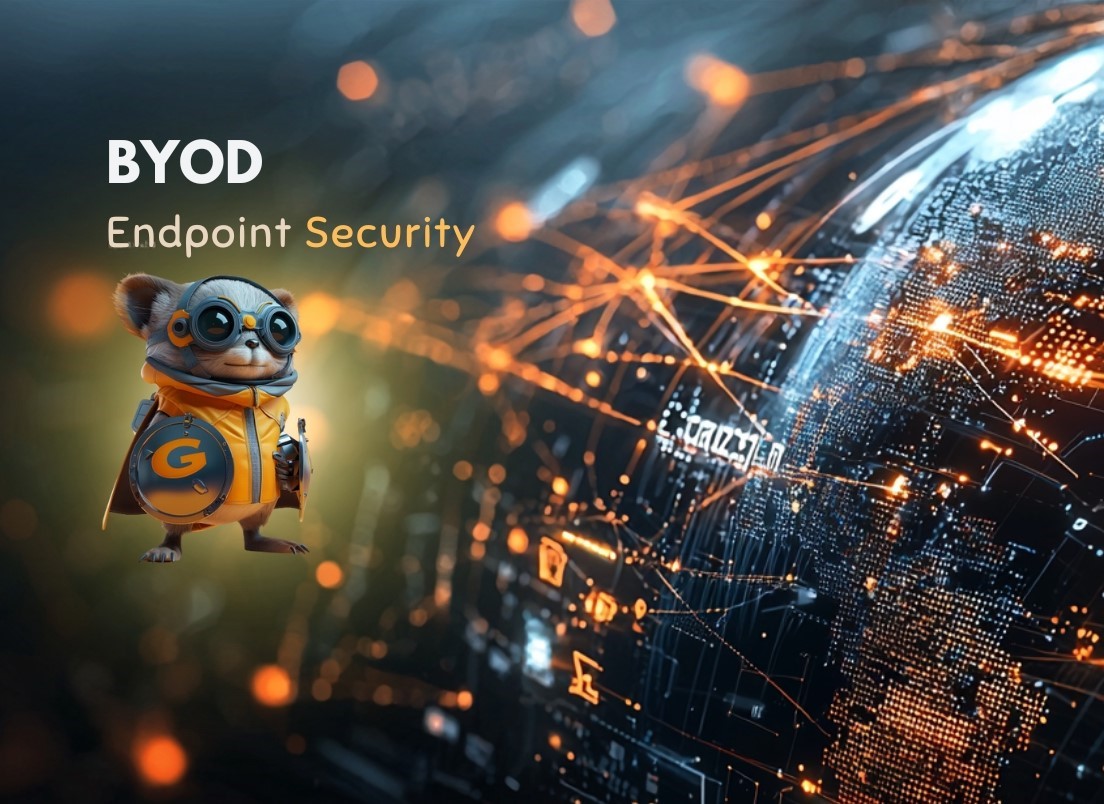Essential BYOD and Endpoint Security Strategies for Safeguarding Remote Workforces

TL;DR
As the modern workplace evolves, the concept of Bring Your Own Device (BYOD) and the need for robust endpoint security have become critical concerns for organizations worldwide. With the proliferation of remote work, cloud adoption, and hybrid environments, the challenge of securing endpoints has never been more complex. This blog will delve into what BYOD and endpoint security entail, why they are essential, the challenges they present, and best practices for securing them. We'll also explore the evolution of endpoint security in response to a remote workforce, discuss various attack scenarios, and compare different security solutions.
What is BYOD and Endpoint Security?
BYOD (Bring Your Own Device) refers to the practice where employees use their personal devices (smartphones, tablets, laptops) for work purposes. This trend has grown exponentially due to the flexibility it offers, but it also introduces significant security risks.
Endpoint Security involves securing individual devices that connect to a network, including laptops, smartphones, tablets, and desktops. It is crucial for protecting against threats that could enter the organization through these endpoints, especially in a BYOD context.
Why is Endpoint Security in High Demand?
The demand for endpoint security has surged due to several factors:
- Remote Workforce: The shift to remote work, accelerated by the COVID-19 pandemic, has increased the number of devices accessing corporate networks from outside traditional security perimeters.
- Cloud/Hybrid Adoption: As organizations adopt cloud and hybrid environments, endpoints become the first line of defense against cyber threats. Securing these endpoints is essential to protect sensitive data.
- Increased Cyber Threats: With the rise of sophisticated attacks like ransomware, phishing, and zero-day exploits, securing endpoints is more critical than ever.
Challenges in Endpoint Security
Securing endpoints, especially in a BYOD environment, presents several challenges:
- Device Diversity: A wide range of devices with different operating systems and security capabilities connect to the network, making it difficult to maintain consistent security standards.
- User Behavior: Users may unknowingly compromise security by downloading malicious apps, clicking on phishing links, or using unsecured Wi-Fi networks.
- Evolving Threats: Cyber threats are constantly evolving, making it difficult to keep endpoint security measures up-to-date.
- Compliance and Data Privacy: Ensuring compliance with data protection regulations (e.g., GDPR, HIPAA) is challenging, especially when personal devices are involved.
Evolution of Endpoint Security
Traditional Security: Initially, endpoint security focused on antivirus software and firewalls installed on individual devices.
Advanced Solutions: With the advent of more sophisticated threats and the rise of remote work, endpoint security has evolved to include:
- Endpoint Detection and Response (EDR): Provides real-time monitoring and response capabilities.
- Zero Trust Security: Ensures that every device and user is verified before accessing the network.
- Unified Endpoint Management (UEM): Centralizes the management of all devices, ensuring consistent security policies.
Scenarios Highlighting Endpoint Security Risks
- User-to-Machine Attacks: These occur when a user’s device is compromised, leading to unauthorized access to sensitive data or corporate networks.
- Machine-to-Machine Attacks: In scenarios where devices communicate with each other (e.g., IoT environments), compromised devices can lead to widespread attacks.
- Partner and Contractor Risks: Partners and contractors often access corporate networks using their devices. If these devices are compromised, they pose a significant risk to the organization.
- Supply Chain Attacks: Cybercriminals target third-party vendors to infiltrate larger networks, as seen in the notorious SolarWinds attack.
Why Endpoint Security is Vital
Endpoint security is vital because endpoints are often the weakest link in an organization’s security posture. A single compromised device can provide cybercriminals with a gateway to the entire network, leading to data breaches, financial loss, and reputational damage.
How to Secure Endpoints
Challenges and Solutions Landscape:
- Challenge: Device Diversity
Solution: Implement a UEM system that can manage a variety of devices and enforce consistent security policies. - Challenge: User Behavior
Solution: Conduct regular security training and awareness programs for employees. - Challenge: Evolving Threats
Solution: Deploy advanced security solutions like EDR and integrate AI-driven threat detection. - Challenge: Compliance
Solution: Use encryption and secure access controls to ensure data protection across all devices.
Best Practices for Endpoint Security
- Implement Zero Trust Security: Trust no device or user by default. Continuously verify and enforce strict access controls.
- Use Multi-Factor Authentication (MFA): Ensure that access to corporate resources requires multiple forms of verification.
- Regular Updates and Patching: Keep all devices updated with the latest security patches to mitigate vulnerabilities.
- Encryption: Encrypt data at rest and in transit to protect sensitive information from unauthorized access.
- Continuous Monitoring: Use EDR tools to continuously monitor and respond to potential threats in real-time.
Security Dimensions to Cover
- Data Security: Ensure that all data is encrypted and securely managed.
- Network Security: Implement network segmentation and firewalls to protect against unauthorized access.
- User Security: Enforce strong authentication methods and educate users on security best practices.
- Device Security: Ensure that all endpoints are secured with up-to-date antivirus software, firewalls, and security patches.
Comparing Different Solutions: Pros and Cons
Traditional Antivirus:
- Pros: Easy to deploy and cost-effective.
- Cons: Limited protection against advanced threats.
Endpoint Detection and Response (EDR):
- Pros: Real-time monitoring, advanced threat detection, and response capabilities.
- Cons: Can be complex and expensive to implement.
Unified Endpoint Management (UEM):
- Pros: Centralized management, consistent security policies across all devices.
- Cons: Requires integration with existing systems and may need significant resources to manage.
Adoption Rate of Endpoint Security: Past, Present, and Future
Past: Endpoint security was traditionally focused on antivirus solutions, with limited adoption in many organizations.
Present: With the rise of remote work and sophisticated cyber threats, the adoption of advanced endpoint security solutions like EDR and UEM has surged.
Future: The adoption of endpoint security solutions is expected to continue growing, driven by the increasing complexity of the IT environment and the rise of IoT devices. Organizations will likely invest more in AI-driven security and zero-trust models to protect against evolving threats.
Conclusion
BYOD and endpoint security are critical components of modern cybersecurity strategies. As the threat landscape evolves, so too must the security measures organizations deploy. By understanding the challenges, implementing best practices, and investing in advanced security solutions, organizations can protect their endpoints—and by extension, their entire network—against a wide range of cyber threats. As we move into the future, the importance of endpoint security will only increase, making it a top priority for organizations worldwide.





